Chris Baty's Blog, page 37
June 29, 2021
Try Writing a Memoir this Camp NaNoWriMo!
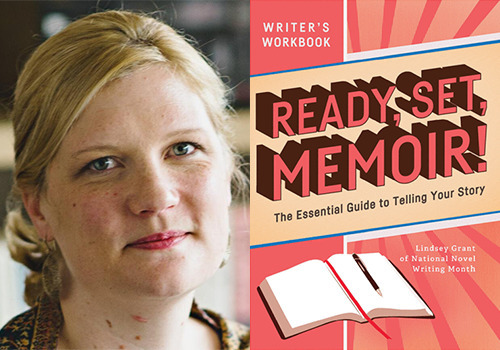
Our newest track for July’s Camp NaNoWriMo session is full of fantastic resources for anyone who wants to write about their own life! Today, Lindsey Grant, Camp Counselor and author of the new book
Ready, Set, Memoir!
shares a few ways that writing a memoir can be fun and creative:
Anyone who has participated in NaNoWriMo’s novel-in-a-month challenge can tell you there’s real magic in this formula of “tight deadline + supportive community = finished first draft”. As the unofficial Camp Memoir Welcome Wagon, I am here, megaphone in hand, to tell you this: just like ultra-fast-footloose-and-fancy-free novel-writing, memoir-writing is also terrifically well-suited for a month-long challenge! Here’s why:
Whether you’re a plotter or a pantser, you’re drawing inspiration and fodder from a resource you know better than anyone: your own life! This means you’ll never be lacking for source material on or insider knowledge of your subject matter.
2. You can take it one step at a time.Memoirs, like memory, are often episodic a writing format that lends itself well to a limited timeframe and a not-so-solid outline. When you hit a dead end, feel blocked, or you’re not sure what happens next, you don’t need to dwell so much on order, continuity, or ingenious plot twists. Instead, you can pick any of your countless relevant experiences** to write about. You’ll figure out where it fits best once your first draft is completed.
**More on what this means coming soon!
3. Only you can tell this story. Really.There’s a long-standing NaNo mantra that you (yep, you there) have a story to tell, and a story that only you can tell. This couldn’t be more true than when talking about memoir. If the past year has taught us anything, it’s that life (yours and yours and yours, too!) is often—usually—stranger than fiction. This July, look inward to the plot machine of your own lived experience!
4. Your perspective is unique.Here at NaNoWriMo, we’ve also frequently reminded you that, “The world needs your novel.” Well, the world needs your memoir, too. Sharing your unique experience and your perspective educates others to lives unlike their own, breeding understanding and empathy, and hopefully curiosity, too. I think we can all agree that the world needs more of all those things, which you can handily provide via your memoir.
5. It’s easier to accomplish big goals with a community!Writing anything, be it a novel or a dissertation, is a lot more productive and less lonely when you’ve got a community to consult and to cheer you on. Whether you’re an old hand at memoir-writing or this is your first foray into the genre, take advantage of the resources and encouragement you’ll find at camp to give your July memoir all the love and help you could want to get from “Once upon a time” to “The End.”
Don’t let my cargo shorts and quiver full of marshmallow-roasting sticks fool you—I am as nervous about new writing projects as the next story lover. If you have the wish, though, to join Camp Memoir and try this new NaNo track with me, we will explore the exciting and occasionally mosquito-infested terrain of memoir-writing together.
Check out NaNoWriMo’s Camp Memoir resources.
Take a look at Lindsey’s new book, Ready, Set, Memoir!
Lindsey Grant is the former Program Director for NaNoWriMo. She holds an MFA in Creative Nonfiction and English from Mills College in Oakland, California. Though she lived in the San Francisco Bay Area for nine glorious, sun-drenched years, she originally hails from Atlanta, Georgia. You’d know she’s a Southerner at heart by her liberal use of the word “y’all” and her belief in casseroles as a form of damage control. She currently lives in Zurich, Switzerland with her husband and their cats, where she cooks often, tries to speak German, and blogs about her attempts to assimilate.
June 28, 2021
Contentedly Creating Comprehensive Characters

We all get stuck on our characters eventually, but maybe all we need is a fresh reminder on how to make those iconic characters. Luckily, writer Cyra Blue has a guide for how to create in-depth characters:
Chances are, if you’re reading this, you have a story (and by extension, some characters) mucking about in your brain. But how to make your forgotten prince stand out from among the many, many others of his kind, shape your villain into something more than a cardboard cutout of Jafar, or give that side character a personality other than “quirky alchemist”? I’ll give you a hint: it’s going to take some planning.
Put away your pitchforks, impulse writers. As a “pantser” myself, I know the urge to spit out your story without really thinking is great, but often comes at the cost of poor storytelling, confusing plot points, and bland characters. A bit of planning will help with that (and might even end up being fun!).
So, characters. Step one is to figure out what the character is doing in the story. Stop styling their spiky black emo hair for a second and pay attention, this is the most important part. In Plato’s Poetics (which is an excellent guide to writing tragedy, by the way), he emphasizes that the plot is the most important part of the story, and characters are intertwined in that, meant to carry the plot to its completion. Therefore, your characters must have a place somewhere in the plot, otherwise, well… they don’t matter. In creating characters for a story, ask yourself:
“What impact does this character have on this story, and how do they help move it along?”
If your adorable kitty girl doesn’t really do much for the gritty fantasy murder you’re writing, it’s time to make some cuts.
Now that you know what your character is doing with their life, you need to give them a personality. The easiest way to go about it is to pick up your cousin and drop them into the story without warning. Seriously. In my experience, I find the character creation process becomes much simpler if you have a good base to start off of. I can’t tell you how many times my brother has made it into my stories, whether he’s the main character or some weirdo walking down the street. The trick is, though, you don’t want to put the person in exactly as they are, especially if they’re going to be reading your story. Rather, you should take them as a base, stripping away all the identifying features until you get to their bones… that is, their personality. From there, you can add details until your new character is fully formed.
Think of it like casting roles in a play: you want the best possible person to play each part. For example, say your best friend is usually cheerful, but works hard to achieve their goals and is motivated to be better by their failures. You can very easily turn that personality into a character just by adding the necessary details, and all of a sudden you have the perfect character type for that extremely important old woman who raises the definitely-not-prince.
Alright, now we get to the part everybody likes: the details. My favorite way to do this is to fill out a character sheet, a myriad of which you can find with a simple Google search. There, you can finally give them their emo hair and favorite food, as well as a backstory, a family, goals, weaknesses, epic karate skills, and whatever else you desire. Looking for more help with their personality? Take a Myers-Briggs personality test as your character to get a feel for how their mind works.
And that’s it! If you follow these steps, you should end up with a good idea of who your character is and what role they play. Now, get out there and try it for yourself. Best of luck to all of you!
Cyra Blue is currently a student at Thomas Aquinas College, where she is pursuing a degree in the Liberal Arts, which should explain the Plato reference. She does not have any currently published works, but is simultaneously working on an anthology detective series and a fantasy novel that may or may not involve a cat girl. In her free time, she enjoys acting in musicals, fooling around with art supplies, and keeping up with way too many cartoons. You can follow her on Instagram @ceruleancyra.
Top Photo by Alice Dietrich on Unsplash
June 24, 2021
Meeting Your Characters
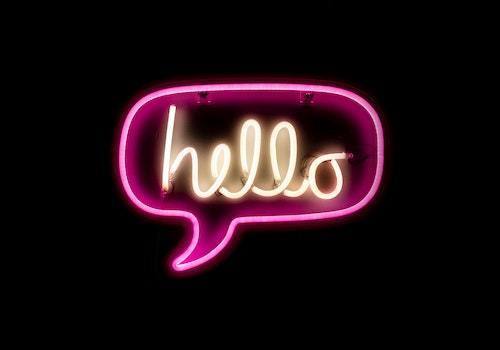
Have you ever had a character show up and demand you write their story? Today, author yk miyazaki is here to talk about how to listen to your characters:
Years ago, I was told by a mentor, “Every person has a story.”
I believe this includes the characters that populate both my romance and women’s novels. I feel blessed that so many of my characters tug at my sleeve, fully alive. They arrive and introduce themselves, usually complete with name, back story, and the hidden mysteries that we carry within ourselves. They show up with their own scent, their eccentric way of dress, their skills, their secrets, and their trust that I will do my best. My job is to listen and tell their stories.
Sometimes they are big, bold, and bossy, as was Martha Janine Montrose. She showed up at the very beginning of my Walkerville Desires series in Book 1/ Return. Tugging at my left sleeve one night, Martha Janine appeared in a figure-hugging Kelly-green satin dress, and matching 5” Jimmy Choo’s with fire engine red lipstick and ‘big’ red (out of the bottle) hair. With hand on hip, she demanded I write her story, insisting she was ‘in control’ (except I knew she wasn’t—which was part of her story). Frankly, I didn’t like her much at first. Over time I have come to respect Martha Janine’s willingness to look internally and find self-acceptance.
Her opposite, Sue Reynolds, also showed up in Book 1. Back then it was just about her baking skills; she was Sue Reynolds, Pie Lady. For a long time, she was content to be in the background, her scrumptious pies giving Walkervillians a reason to always have vanilla ice cream in their freezer.
(Josie) … was in the middle of putting together a large, tossed salad. She had large bowls and dishes filled with potato salad, mixed steamed vegetables lightly buttered and spiced, pickled red onions, and fresh slices of bread.
On the counter were two Sue Reynolds apple pies. Ruth knew there’d be vanilla bean ice cream in the freezer.
—Excerpt from Walkerville Desires Book 4 / Resilience
I felt an aura of sadness around Sue; she was reserved, always hoping to be unnoticed. However, her reputation spread as people wanted more of her pies.
Internally, she was conflicted. For the first time in her life, Sue had a community that ‘felt like home.’ But her secret threatened to destroy the relationships she was coming to treasure.
I knew Sue had a story. But first she would have to trust that I was the one to tell it. Once she found me trustworthy, she had definite ideas about how her story was to be told. I was to be nonjudgmental, and I was not to write her as a victim of her history.
In Book 7/ Rewire, Sue Reynolds finally gets her day. I am grateful for her guidance and her trust as I told her story just the way she wanted.
Sometimes my pages are populated with head-spinning speed. Other times that process is much slower. But, for me, the work is in listening to my characters.
Sometimes, no way is the way. Whatever your experience, respect and listen to your characters.

While always feeling that she was a writer, after a long career in the helping professions, yk miyazaki began seriously writing fiction several years ago. Seven of a projected series of ten books in her Walkerville Desires romance series have been released. The others, along with several women’s novels, are in various stages of development. yk makes time for her writing daily, be that drafting new pages, polishing existing material, or researching. You can visit her Amazon author page, find out about her background in Discover Nikkei magazine, or listen to the Well Heeled Wednesday podcast.
Top photo by Drew Beamer on Unsplash.
June 23, 2021
The Real Goal of NaNoWrimo

What have you experienced on your NaNoWriMo journey? Writer Lorna Smart has participated in NaNoWriMo for many years, and has found goals to help her writing even when she hasn’t reached 50,000 words:
I had heard about National Novel Writing Month from an author friend of mine who was very much into it. I was doubtful at first as I had only been writing poetry and short stories up to that point. I was also somewhat intimidated by the 50,000 words in a month target. I was also worried that I may be subjected to the sort of snobbery that I had suffered in other writing groups, especially if I did not reach the targeted word count. All of this worry was enough to put me off for a couple of years.
Then in 2013, I said to myself, “What have I got to lose? If I don’t like it, I don’t have to do it again. It may even result in a complete novel.”
Still, with a little trepidation, I set up my account and thought of an idea. It didn’t take too long for the rest of my fears about joining in to be put to rest. I was sent a lovely welcome message, shown where I could find support, hints, tips, and generally, chat with other writers through the forum. I visited a few of the forum groups before making my introduction and was pleased to see that the responses to other newcomers were very welcoming. I made my introductory post and their response to me was exactly the same.
I was really going to try and write 50,000 words in a month. Yikes! I didn’t that time or any other time that I have participated since. For the first couple of years, this really frustrated me and I felt like a failure. However, after a change in personal circumstances that led to me not participating for a couple of years, I had a lightbulb moment. I was looking at this all wrong. This wasn’t a competition. Even 2000 words is still 2000 more words towards a completed story. I was also forgetting the most important thing, to have fun.
The best advice I can give for anyone thinking of starting their National Novel Writing Month journey- but is a bit concerned - is just go for it. You have nothing to lose but potentially something to gain. The website is easy to navigate, the people are friendly, and there is lots of support and guidance. Also, have fun exploring your ideas. Anything you write for National Novel Writing Month is more than you would have written otherwise.

Lorna Smart is a 39-year-old writer and who lives in Norfolk, UK. She has been writing poetry and short stories since she was 9 years old. In more recent years, she has branched out into blogging and article writing. Smart finds writing very enjoyable, a great way of expressing herself, and even therapeutic at times. She’s been very fortunate to have some of her poetry and articles published both online and in print. She also enjoys drawing, card making, and cross-stitch.
Photo by Aleks Marinkovic on Unsplash
June 21, 2021
The Best Writing Tools to Win NaNoWriMo

Five-time WriMo-Winner Jenna Plute won her first NaNoWriMo in 8th grade and hasn’t looked back since. She’s here to tell us about some of the unusual apps she’s test-driven to help a wide range of writers navigate their way to the finish line!
The goal of National Novel Writing Month is to write fifty thousand words. That’s it. Sounds simple, right? You could copy-paste the word “purple” fifty-thousand times, and you would win. Unfortunately, it’s not that easy. Your inner-editor steps in, and no words seem good enough to put to paper. And maybe this is good if you have years to write your magnum opus. Each turn of phrase can be molded, each comma artfully placed, each setting fully fleshed out. But when you’re writing a novel in a month, overthinking is the enemy of success. To avoid this, nothing has helped me as much as programs that force you to write continuously. With these programs, I can bash out 1,667 words in 45 minutes. Are they good words? No. But will I win NaNoWriMo and have a first draft? Yes. And that’s the goal.
Fighter’s Block is a RPG-style writing program. You are the protagonist seeking to defeat some monster, whose XP bar corresponds to your word goal. Each time you type a word, you decrease the monster’s XP while raising your own. The catch is that the monster also attacks you. You can set the speed of the attack in the settings based on how fast you type. The goal is to write faster and reach your goal before the monster can defeat you.
Pros: This gamifies writing and makes it seem less intimidating. You just have to type to win, and the settings are adjustable. The concept is cute, especially if you love fantasy. There is also a local save that can hold all of your writing, so you don’t NEED to save it in another document.
Cons: It is easy to delete your local save and lose thousands of words with a single click. For added security, you really need a secondary save.
750 Words is inspired by the concept of “morning pages”, which is the habit of writing a few pages every morning to put your thoughts to paper. It’s a repository to hold all of your daily pages in a private area and will give you feedback on how much you pause or get distracted while writing. You can also see automated summaries that display the general emotions, themes, and ideas of your work.
Pros: This is a great way to create a writing habit and gives you a secure platform to hold all of your work. You can also gain insight into the mood and emotion of your story (or life, if you want to use this for journaling).
Cons: Though this helps motivate you with a simple goal, it does not force you to write. It gives you the information to analyze your patterns, but that still puts the onus on you to stay focused.
Written Kitten is for those motivated by praise as opposed to punishment. Each time you write a hundred words (you can change this amount), you receive a cute picture of a kitten, puppy, or bunny. The more you write, the more cute pictures of animals you can see!
Pros: This program is less stressful which can allow a more leisurely writing session. The animals are all certainly cute, and it does exactly what it promises.
Cons: The local storage isn’t reliable, so you have to transfer your work to a separate document every so often. The less stressful nature of this program also works against it in maximizing word count in a short amount of time.
Write or Die’s operation is encapsulated in the name. While the website won’t actually kill you, it will kill your words in the method you choose. If you aren’t typing fast enough (at a rate you choose), the site will begin deleting your remaining words, turn your screen bright red, or play an explosion sound effect.
Pros: This program is extremely effective in making you want to type. There’s also a huge amount of customization available, especially if you’re willing to pay for the full version. With the full version, it will also save your work.
Cons: Even with adjustment, the consequences are too harsh for me. It’s just annoying to see the screen flash red or your words be deleted. Failing multiple times was just disheartening and made me want to quit NaNoWriMo out of anger.
My personal conclusion is that Fighter’s Block is the best. I’ve used it for the past three years (and past three wins) and have remained impressed. The format is intuitive and it’s not difficult to transfer to Google Docs. The level of consequence also fits me the best. 750 Words and Written Kitten are too soft, but Write or Die is too stressful.
In the end, choosing which software all comes back to what NaNoWriMo stands for: a fun challenge that generates a first draft. Winning is word count. If these focuses sound like you, try one of these programs and see if it helps.
Good luck and happy writing!

Jenna Plute is a five-time NaNoWriMo winner originally from Colorado. When she’s not reading or writing, you can find her studying math or drawing. Though she hasn’t yet published a book, she hopes to before she dies.
Top photo by Dan Barrett on Unsplash.
June 17, 2021
Author Interview: Jean Hanff Korelitz on Plotting
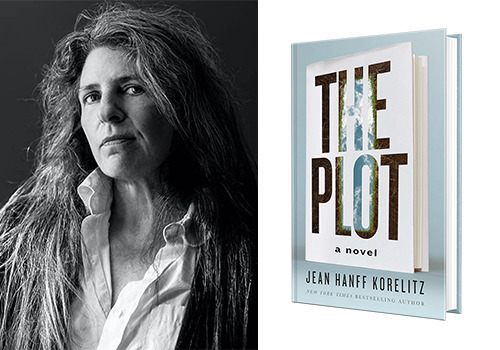
Every year, we’re lucky to have great sponsors for our nonprofit events. In author and NaNoWriMo supporter Jean Hanff Korelitz’s new novel The Plot, a failing author steals an unused idea for a bestselling book with deadly results. Today, we asked Korelitz some questions about how she came up with the idea for The Plot—and her approach to plotting a novel:
Q: How did you go about plotting this novel? For example, did you outline it or refer to any popular plotting resources like Save the Cat or Hero with a Thousand Faces? Or do you trust a more improvisational approach to writing and plotting? Or both?
A: I’ve actually never heard of either of these resources. They sound a bit suspicious, like that computer, EPICAC, in the Kurt Vonnegut story of the same name, who churns out years of ready-made love poems for its lovelorn programmer. It was my favorite Vonnegut story, but I’d still want to steer clear of that input/output when it comes to my own creativity.
For me, a plot usually begins with a “What if” question and finding a way through what happens next comes from thinking it through as it unfolds. What makes sense? What makes too much sense? What is unexpected? Sometimes you get it wrong and have to go back (as I did, once, during the time I was writing The Plot, but that just shows you’re paying attention. Your reader isn’t stupid and doesn’t wish to be patronized (thriller readers in particular are intent on figuring it all out before you’ve made up your mind to reveal the information), and they’ll be the first to tell you how early in the story they solved your big mystery.
I usually know about 60 percent of what I’m going to write before I begin a novel, and my own feeling is that if the author isn’t at least a little bit surprised, herself, as she’s writing the book, it transfers to what’s on the page. That distinctly stale worked-out-in-advance feeling is just what I’m trying to avoid.
Q: Was this novel influenced by the plots of any other novels?
A: No, although elements of the story have certainly appeared in other novels. Plagiarism? John Colapinto’s About the Author, for one. Tapped out professors of creative writing? Michael Chabon’s Wonder Boys. Creative self-doubt? There’s an entire sub-genre of Stephen King’s oeuvre about that. I’m already seeing a bit of “Doesn’t this book sound like…” questioning on Goodreads and Amazon. The specific books and movies that have been mentioned are way off, but you can describe most things in ways that make them sound like most other things. I don’t think these particular questioners have read the novel, but if they do read it they’ll realize that they’re actually demonstrating one of its arguments: most ideas are not original, and should not belong to any one writer.
Q: While writing this book, you must have put yourself in the shoes of your main character. Do you think you’d ever steal a genius idea for a book if you knew it would never be used?
A: I wouldn’t, but only because I’m squeamish by nature and I’d be terrified about that degree of exposure and disapproval. But, like most artists, I also understand that stories run underneath the ground of our collective experience, and we all dip into them, whether we’re aware of it or not.
The real question is: At what point does a collective story become the individual property of a person or an artist? Who’s going to seriously accuse Jane Smiley of “appropriating” Shakespeare when she wrote A Thousand Acres, or Charles Frazier of stealing from Homer when he wrote Cold Mountain? A contender for the 2020 Pulitzer Prize for Drama was The Inheritance by Matthew Lopez, which openly adapts Forster’s Howards End to contemporary New York City. This is a normal, even laudatory practice, which artists fully understand.
But to help yourself to the specific plot of a recently deceased author who never completed his book? I don’t know where the line is, exactly, but I’m pretty sure that’s over it.
Q: Throughout The Plot, several characters posit that writing can’t be taught. As a writer, do you agree or disagree?
A: Let’s just say that I’ve long felt there’s a limit to what can be taught. On the other hand, I have many friends who have benefitted from time in MFA programs and writing seminars, and my husband teaches poetry writing at the college level, I think rather effectively. I didn’t go the MFA route, myself, but I did take a creative writing class in college, and I learned something very important in that classroom, which was that I was allowed to make things up. It seems so obvious, but in my own case, I required someone to explain that to me, and I’m grateful to this day that my teacher did.
Q: What plotting advice would you give a beginning writer?
A: Read bad books (in addition, of course, to great books!) and ask yourself why they’re bad. Then, when it’s time to write your own novel, don’t do those things. Sounds simple, doesn’t it? That’s because it is. I just wish more people would do it.
Jean Hanff Korelitz is the author of the novels YOU SHOULD HAVE KNOWN (adapted for HBO as “The Undoing” by David E. Kelley, and starring Nicole Kidman, Hugh Grant and Donald Sutherland), ADMISSION (adapted as the 2013 film starring Tina Fey), THE DEVIL AND WEBSTER, THE WHITE ROSE, THE SABBATHDAY RIVER and A JURY OF HER PEERS. A new novel, THE PLOT, was published on May 11th 2021. Her company BOOKTHEWRITER hosts “Pop-Up Book Groups” in NYC, where small groups of readers can discuss new books with their authors. www.bookthewriter.com
June 15, 2021
Why We Write

Every year, we’re lucky to have great sponsors for our nonprofit events. NovelPad, a 2021 NaNoWriMo sponsor, is an effortless novel editor, designed for you. Today, NovelPad community member Nathaniel George is here to some insight on why we writers choose to tell stories:
As writers, we’re charged with capturing a picture that only exists in our imagination. We assemble prose and metaphor in ways that allow another human to share in our vision. We endeavor to perform nothing short of witchcraft, the spells we cast being sent into the universe, seeking a worthy vessel.
At NovelPad we set out to create the best writing experience possible, and this aim has shaped everything we’ve built. We wanted to make a writing tool that is effortless for anyone by organizing the characters, ideas, and places so a writer can focus on the story itself. With NovelPad, anyone can get started writing and see their story through to the end.
We believe writing is as fundamental as breathing and is an integral part of the human experience. As we near the next session of Camp NaNoWriMo, we thought it worthwhile to remind ourselves of the importance of writing and our value as writers.
Writing on purposeHumans are obsessed with numbers. This is not a recent phenomenon, as counting has been with us long before the first writing system. Counting as a measure of success is ingrained in everything we do. Got a raise at work? That’s a promotion. Want to get in shape? Work out for 30 minutes at least 3 times a day, lose 10 kilos, and run 8 km. Want to be famous? You need more likes, more followers. Want to be a writer? Spend at least an hour a day, finish 2 chapters this month, and write at least 12,000 words a week.
As Wrimos our goals are clearly laid out before us, meant to challenge and motivate us. But achieving writing goals isn’t the purpose of writing. The chief purpose of writing is much more profound than that: In all of human history, the existence of life, and the universe itself, you are the singular source for the story you have to tell.
We’re tempted to think that success is only measured by copies sold, awards received, or number of published titles. These are laudable achievements for which anyone should be proud. But do not lose sight of the value your story adds to the human experience. It is an irreplaceable narrative that can only come from you.
Time TravelersIn the 3rd Millennium BCE, a king named Shuruppag thought his son should have the benefit of his wisdom. His fatherly advice is some of the oldest writing in existence. But despite 5000 years of time, we can read what he had to say, and for a moment see the world through his eyes. One of his last lines seems almost prescient:
“It is inconceivable that something is lost forever.”
—The instructions of Shuruppag, line 264
Writing is our only shot at immortality. It is the only way we can reach through time and be heard as clearly as we are today. I doubt that the king could have understood how far into the future he was casting his guidance, but even today his proverbs have value. As you prepare for NaNoWriMo, understand this superpower that you wield, and use it to broadcast your voice into the future.
Never Not WritingWriting consistently can be a daunting prospect as we move through our lives. The stresses of life, family, relationships, and finances don’t exactly create an ideal space for us to put pen to paper. But writing is not the mechanical act of putting down words. Writing is storytelling. It’s creating a world in imagination and bringing those characters and places to life. Sometimes the worlds we create consume our attention, a distraction from our day-to-day life. Other times we conceal them in our sub-conscience, in safe-keeping for their due time.
Writing is a uniquely human behavior. We create characters with our imagination and give them complex emotions, dreams, and fears. These feelings can be as real to us as our own because ultimately, they are our own experiences. Writing allows us to explore parts of ourselves that otherwise would stay buried, and it enables us to empathize with those around us. We write because it offers each of us a way to make sense of the world. It’s like a reflex that our brains have learned to use for understanding each other. The stories are there no matter what we do. Our only decision is whether we offer them up for others to see.
Writing is a part of the human experience, and it offers us responsibility, power, and rewards in vast amounts. Whether this is your first time or a lifelong passion, every story holds immeasurable value for you, for us, for all humankind. At NovelPad we hope you will share your story because with it, the world is a bit better off.
Nathaniel is an avid author and one of the first ever users of NovelPad. You’ll find him, when he’s not writing that is, helping other writers in the NovelPad community along their journey to reaching their writing goals.
June 10, 2021
I Published My NaNo-Novel: How 50,000 Words Boosted “Bear Boy”
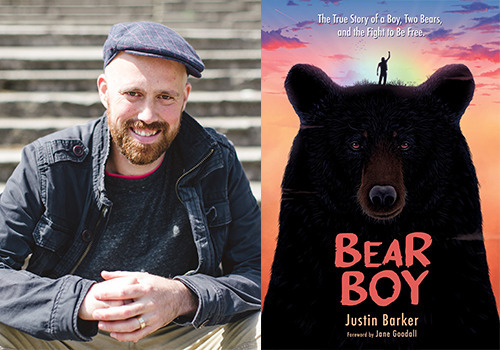
The path to publishing a novel isn’t always easy. Today,
Justin Barker, author of the novel Bear Boy,
offers some insight on making difficult decisions, both in writing and in life
:
“You have 12 hours to live.” A drum starts to beat like a heart and quickens. “What would you say?” my yoga instructor asks, “Who would you want to see? What are your regrets?” It was day 40 of a yoga retreat, and tears streamed down my face as I scribbled my thoughts, but there was one I couldn’t get off my mind. It was a regret: that I had never helped another zoo animal. I had spent much of my teen years speaking out against captivity, fighting to free Brutus and Ursula, two bears living in abysmal conditions in a cage near my home, and I had succeeded against all odds. That felt good, but I was an adult now with an adult’s awareness and power. And I had done nothing else.
I walked away from that imagined glimpse of death more alive than ever and burning to tell my story. I had no idea what I was doing, but I started writing and struggling—not knowing what to write, not being able to stay motivated. Four years in, with my first draft in the trash, I discovered NaNoWriMo. I signed up for the 50,000 word challenge. I booked a cheap flight to Chiang Mai, Thailand, where I would create my own writing retreat. I hopped from one wifi hotspot to the next—fueled by tropical views, delicious vegan food, and an ambitious daily word count.
When that 2015 Nanowrimo wrapped up I felt like I had accomplished something. I felt 50,000 words closer to my dream of telling my story, but little did I know, at the time, I was still six years from publishing my book. NaNoWriMo helped me lay out the facts of my story and capture key moments of dialogue. It gave me purpose and courage and forced me to take action—all critical elements for any writer. But to be publishable, my writing and my storytelling needed some serious help.
Luckily, I met Jennie Nash, who became my book coach. She guided me through a process to define my mission—I wanted young readers to walk away inspired to stand up for themselves and for animals. She helped me build the structure of my story, offered me guidance and accountability as I moved from having a bunch of words on a page to having a compelling story someone might actually want to read. She helped me realize my story wasn’t just about saving two bears, it was also about saving myself—how as a queer teen I struggled with the confines of gender norms, suffered taunts and physical attacks, and how those experiences helped me empathize with animals locked in cages far from their natural homes. That was the real story.
“When that 2015 Nanowrimo wrapped up I felt like I had accomplished something. I felt 50,000 words closer to my dream of telling my story.”I had a dream of a traditional publishing deal. I thought it would be an excellent platform to continue the conversation about the horrors of captivity that I started when I was young. Jennie helped me build my pitch to agents: “Bear Boy is for today’s idealists, outsiders, rule breakers, go-getters, and activists. My ideal reader is 12 years old, the same age I was when I started my activism.” After over 100 pitches, I landed a New York City agent. I was ecstatic and she was ready to slice and dice my manuscript. “We need to completely eliminate the gay part of your story” she said. It was a punch to the gut, but I thought maybe she knew what she was doing so I did it. She pitched my reworked manuscript to all the major book imprints. A year passed without a deal and she said my lack of a social following was to blame and that I should write a controversial piece about Greta Thunberg to get some media attention. My heart sank. How could I possibly say anything bad about Greta? I saw myself in her young activism and was deeply inspired by the movement she was building.
That’s when I decided that I no longer wanted an agent or a traditional deal. I was scared, I knew nothing about how to bring a book into the world, but I decided to press on, establish a book imprint and bring my book to life on my own terms. I hired professional copywriters, proofreaders, interior and cover designers. I did a lot of research. I had really tough days, both technically and emotionally. There were many moments that I wondered if I made the right decision, but I am on the other side of all of that doubt now. It took 10 years but Bear Boy: The True Story of a Boy, Two Bears, and the Fight to Be Free is here, in the hands of early readers. Young people from all corners of the globe are reading and reviewing the book, saying it’s inspiring them and that it’s making them rethink their relationship to nature and animals.
It’s Pride month and I’m proud to be able to tell a queer story. And, I have to acknowledge the privilege I hold as a white cisgendered male with the financial resources, flexibility, and support to go out on my own. I believe anyone can write and power through the challenges to get their story into the world, but we must all work together to challenge and reimagine the systems in both indie and traditional publishing that limit access and continue to marginalize so many important voices and stories.
Justin Barker is an animal activist, producer, and author of Bear Boy: The True Story of a Boy, Two Bears, and the Fight to Be Free. With his YA debut, Justin hopes to highlight the plight of zoo animals and inspire young people to stand up for themselves, animals, and their fellow humans. He lives in San Francisco with his son Noah and wife Bridget; he and Bridget both identify as queer.
Web: www.bearboy.org
Instagram & Twitter : @justinbarkertv
June 8, 2021
Meet Our New Editorial Intern, Naudika!
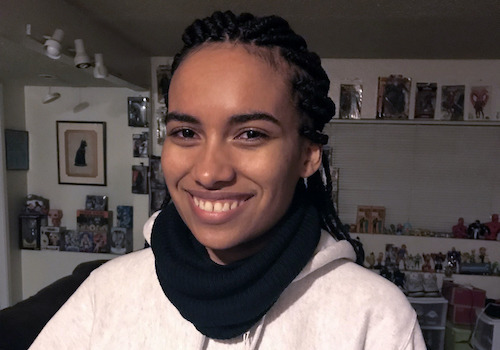
We feel super lucky here at NaNo HQ to be able to work with some excellent interns! Today, meet our newest Editorial Intern, Naudika Williams. You’ll be getting to know them better throughout Camp, but today they’re here to tell you a little bit about themself:
I remember waking up at 4 am on the weekends to quietly write in the dark, just adjusting the light enough to avoid disturbing my sleeping family. I would sit at the dining room table until my hands would warm the wood and peel away with sweat. My mom would scold me for being up so early, so I stayed up late in retaliation to finish my stories.
It’s kind of ironic that I’m the Editorial Intern because NaNoWriMo inspired me to write my first novel. I took a beatdown, grey laptop and started typing every day, despite hand cramps or sleep deprivation. I look back now at my novel, some overly complicated fantasy, and recognize it’s absolutely horrible. Atrocious, honestly. I will never share it, but the pride I hold for that mess of a narrative that I produced is something I can’t forget.
I’m never sure if writers choose to be as passionate as they are about storytelling. I can show you my wall of littered notecards and stacked post-its that decorate my room like trophies, waiting to be immortalized in a book or script. I wonder if this is enough to prove my passion. There are times I think of a boring anthropology class I once took, teaching me about oral stories as part of the human experience. Then the silent workshops that hold writing as a healing ritual, and think that maybe just getting a word on a page is my way of expressing nothing more human than wanting to be heard. Maybe I’m a little biased, but I like to think of the moments of my hands sweating, stuck to pages in the dark.
Naudika Williams has been a writer since they could hold a pencil correctly, which, honestly, still depends on the day. They wrote their first novel on NaNoWriMo in 2012 and now is the 2021 Editorial Intern. Naudika continues to make their many short stories, scripts, poems, and choose-your-own-adventure games inspired by Afrofuturism and environmental justice. They hope that one day if someone could summarize their work, it would be described as “chaos and too many animal references”.
June 1, 2021
nanowrimo:It’s Pride Month! The act of writing can be...

Rainbow Pride flag with Black and Brown stripes with rainbow books
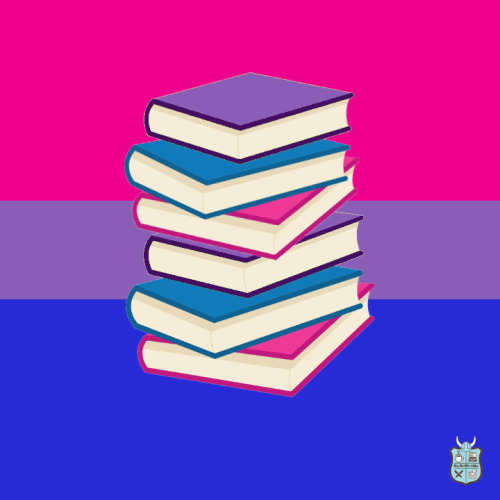
Bisexual flag with pink, blue, and purple books

Transgender flag with blue, pink, and white books

Lesbian flag with red, orange, pink, and white books
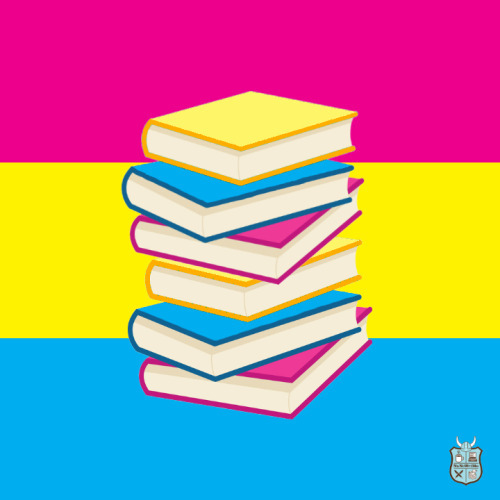
The pansexual flag with pink, blue, and yellow books

Agender flag with green, black, white, and gray books
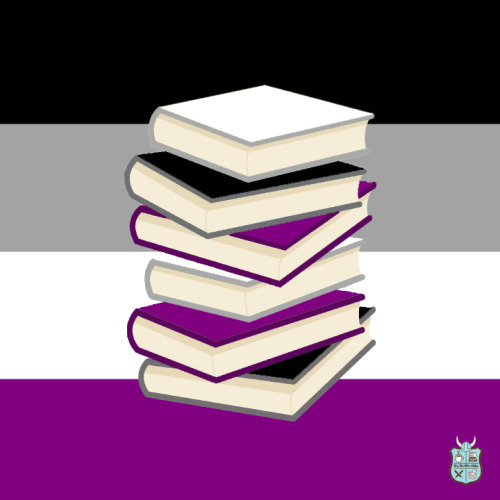
Asexual flag with white, black, and purple books

Genderqueer flag with green, white, and purple books
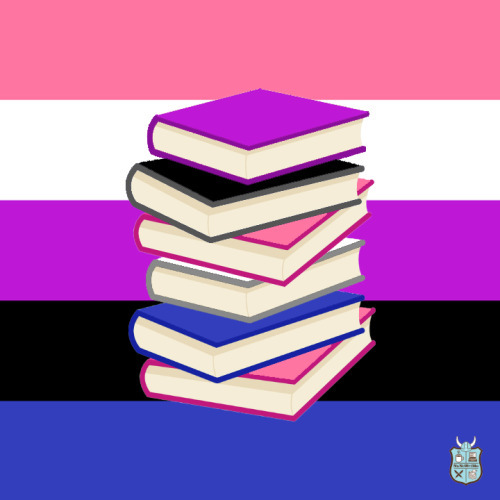
Genderfluid flag with blue, black, pink, and purple books
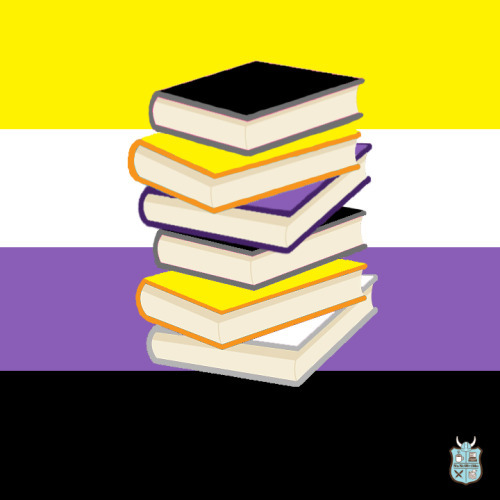
Nonbinary flag with black, purple, and yellow books
It’s Pride Month! The act of writing can be vulnerable, empowering, cathartic, joyous, difficult, and rewarding. Whatever your identity (and whether you openly share your identity, or choose to keep it to yourself), we’re glad you’re here with us to tell your stories.
Feel free to share or download your bookish Pride flag(s)!
🖤🤎❤️🧡💛💚💙💜
Image descriptions:
Let’s celebrate Pride month! (The full album of bookish Pride flags is available here).
Chris Baty's Blog
- Chris Baty's profile
- 63 followers



